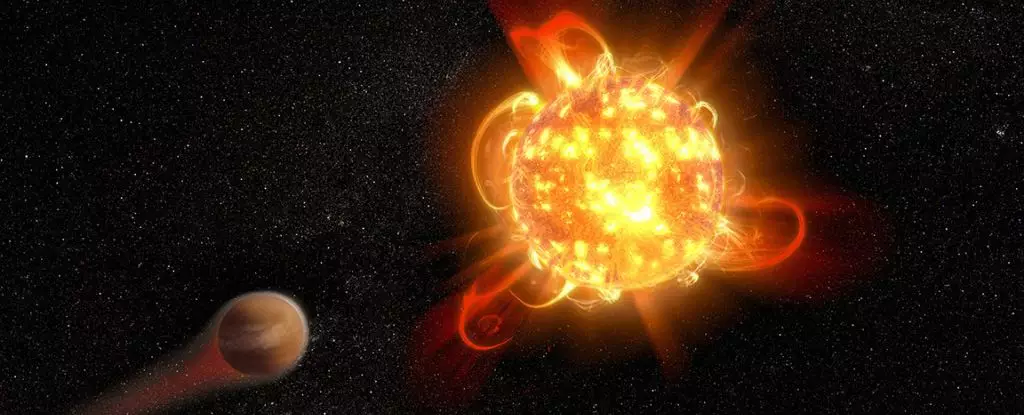Red dwarf stars, or M-class stars, have long been viewed as some of the most likely candidates in our search for extraterrestrial life. Their smaller mass, cooler temperatures, and long lifespans seem to make them ideal stellar hosts for life-bearing planets. In fact, existing models of planetary habitability often prioritize the potential for rocky planets in the habitable zones around these stars. However, recent research brings to light a critical aspect that could undermine this optimistic view: the unique characteristics of the stellar flares emitted by red dwarfs, particularly their ultraviolet radiation output.
M-class stars account for approximately 70 percent of the Milky Way, illustrating their prevalence in our galaxy. Their relatively stable and long-lasting nature contributes to the perception that they are nurturing environments where planets could support life. Because red dwarfs burn their nuclear fuel slowly, they can remain in a stable phase for billions of years, offering plenty of time for the development and evolution of life.
Additionally, the proximity of the habitable zone to these stars implies that many rocky planets could fit within this crucial area, where conditions might support liquid water—a fundamental requirement for life as we understand it. Yet, the narrative surrounding red dwarfs is complicated by their tendency to produce frequent and intense stellar flares.
Unlike more massive stars, red dwarfs are prone to emitting powerful stellar flares, which pose a significant threat to any planets in their vicinity. The recent study utilizing data from the GALEX space telescope unearthed alarming revelations about these flares. Researchers analyzed nearly 300,000 stars and focused specifically on the emissions from 182 M-class flares.
Traditionally, the emissions of such flares have been modeled after a blackbody spectrum, producing radiation at temperatures that seem deceptively benign compared to the intense heat generated by the flares. However, the new findings challenge this understanding, revealing that the ultraviolet (UV) radiation emitted during these events is substantially more intense than previously thought. The implications of this discovery could alter our conclusions about the habitability of planets orbiting red dwarfs.
The study highlights that the UV radiation produced by red dwarf flares may reach levels that can threaten planetary atmospheres. While certain UV wavelengths can indeed aid in the formation of organic compounds—key building blocks for life—excessive exposure can strip atmospheres of essential elements, including ozone. This destruction not only undermines the potential for life but also raises questions about the long-term viability of any developing ecosystems.
What remains concerning is the assertion that about 98 percent of the observed stellar flares emitted UV radiation far exceeding the expected levels under traditional blackbody assumptions. This could mean that prior assessments regarding the viability of life in the habitable zones of red dwarf stars have been significantly miscalculated. If the flare emissions are truly this severe, even planets that seem suitable for life due to their temperature and distance from the star may be rendered inhospitable.
The implications of this research necessitate a reassessment of our search for extraterrestrial life. While M-class stars hold potential due to their abundance and stability, their volatile nature may preclude the development of life in the way we have traditionally envisioned. As astrobiologists continue to probe the nature of exoplanets orbiting red dwarfs, they must account for the harsh realities of stellar activity, specifically the unpredictable and powerful emissions that accompany these stellar bodies.
While M-class stars have captivated our imagination as potential cradles for life, recent studies compel us to confront the complexities of what habitable conditions truly involve. Red dwarf stars may not be the gentle giants we once believed them to be, and their hazardous emissions paint a far more perilous picture for any hypothetical life-forms existing within their orbit. As our understanding deepens, we must remain vigilant, constantly refining our models of habitability to reflect the profound realities of our universe.


Leave a Reply